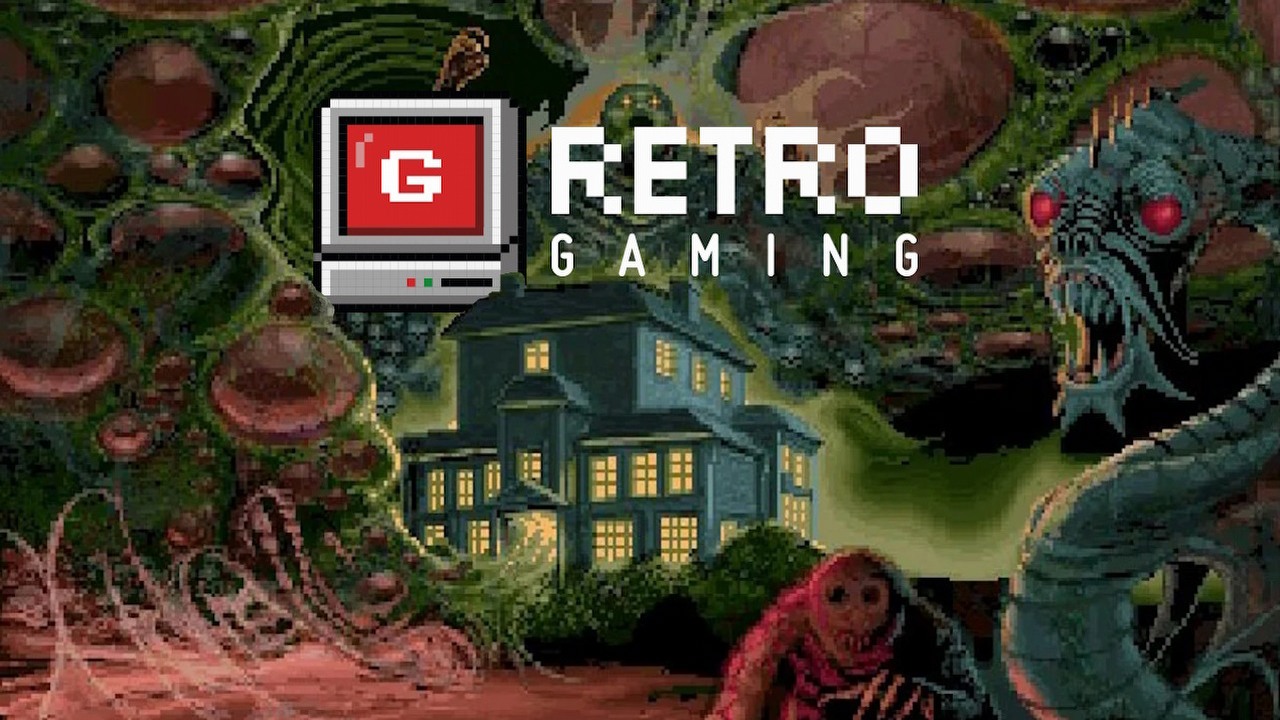The 1992 Alone in the Dark was the Progenitor of All Survival Horror
After a hiatus of many years, the legendary Alone in the Dark is returning. The latest installment will show a completely new approach to the story and characters we met more than 30 years ago. The title was hailed as a revolution at the time, and no one guessed that it was playing the first survival horror game.

Alone in the Dark returns! On March 20, a new version of this somewhat forgotten brand will appear, whose latest releases were, to put it mildly, not very successful. But when the first part hit the market in 1992, the industry was dazzled. Alone in the Dark from the French company Infogrames turned out to be absolutely groundbreaking, surpassing everything that had been created thus far. It laid the foundations for the genre known today as survival horror. Without Alone in the Dark, there would be no Resident Evils and Silent Hills. What was so special about the French game?
A technical masterpiece
Not knowing the term "survival horror" at all, the Polish Secret Service magazine described Alone in the Dark as an "animated adventure game with arcade elements", i.e. an animated arcade-adventure game. It's no wonder, because the game was mainly focused on exploration and puzzles with occasional combat, and in the pixelated times, it offered a three-dimensional character with detailed animations of all movements and actions.
Moreover, the initial "demo" (as intros were called back then), which in other games usually differed greatly from gameplay actual, looked exactly the same as the rest of the game. Alone in the Dark had the intro made in the game engine instead of being pre-rendered, which was very bold in that day and age. As was, in fact, the entire graphic design, in which flat, hand-drawn backgrounds of rooms were filled with three-dimensional objects. Besides, playing Alone in the Dark was like watching an engaging movie -- this effect was achieved with static cameras placed in selected spots.
Aside from stunning graphics with detailed animations of pushing objects, opening them, hand-to-hand combat, and drawing a bowstring, sound card owners could marvel at the incredible sound design -- every rustle, every creak sent shivers down your spine, and the developers even took care of such details as completely different footstep sounds when stepping from a wooden floor onto a carpet. Back in the pixelated era of 1992, Alone in the Dark was a technical tour de force. Today, however, we'd probably liken Edward Carnby's animations to the comedic clumsiness of Mr. Bean, and his face to a cubist masterpiece, abstract and intriguing.

Derceto had crushing atmosphere
In Alone in the Dark, we played Emily Hartwood, or the private detective she hired, Edward Carnby. Regardless of this choice, our task was to explain the mysterious death of Emily's uncle -- Jeremy Hartwood -- in a gloomy mansion called Derceto. In fact, however, the mystery of his death was solved at the beginning, and our real task was to get out of this spooky, haunted house, where you could really feel alone and in the dark. On the way, we were learning more and more details about the fate of the uncle and the history of Derceto. Solving ingenious puzzles unlocked subsequent rooms in the house, and occasionally we had to fight something like a zombie or an aggressive, fanged chicken.
Combined with slow exploration, phenomenal sound design and music, it created an amazing horror atmosphere, in which we were afraid of the unknown, of what lurks behind the door, rather than of jumpscares or excessive gore. In a few places, the game was even non-linear, allowing actions to be performed in different order, or including optional activities. This was the case even at the very beginning, in the attic, where blocking the window with a wardrobe and the hatch in the floor with a box allowed to avoid fights with opponents. On top of that, players were delving here into the universe of the famous Call of Cthulhu based on HP's prose. Lovecraft prose.
As the events unfold, we discover that Derceto in Louisiana was built by the pirate Ezechiel Pregzt. In the underground, where a huge tree grew, he performed rituals of an ancient cult, thanks to which he gained wealth and a extensively long life. Pregzt was ultimately shot dead, and Derceto was burned by Union soldiers during the Civil War. Pregtz's spirit survived in the old tree and began harassing the new owner of the rebuilt Derceto aiming to take his body over. To prevent this, Jeremy Hartwood committed suicide. The next target for Pregtz became the protagonist -- Edward or Emily.

Only "inspired" by Call of Cthulhu
The game was developed under several working titles, which changed during the process. These were: In the Dark, Screams in the Dark, The Old Dark House, The Thing in the House and The Evil Fear. Initially, Infogrames even had a Call of Cthulhu license, but it was revoked during the development. The sources mention two different reasons. According to one source, the game's plot, which only took a few details from the Lovecraft universe to explain the origin of Derceto and the enemy designs, and was marketed as merely "inspired by Lovecraft's works," did not deserve the brand. Another theory suggests that the simple gameplay of shooting monsters and solving puzzles while exploring a house didn't align with the concept of a complex role-playing game, which required a dice and a notebook.
Alone in the Dark was actually leaning more towards the 1970s horror movies from directors George Romero and Dario Argento. Everything started with a chalk drawing of a cult frame on dark paper, featuring a character holding a lamp in the darkness. The decision was made to set the action in the 1920s, which justified visiting a house like Derceto alone, without any modern inventions. There were doubts about the game's graphics being scary enough, so scripts were added where the player could die doing seemingly normal things, like reading a book. Apparently, the character Emily was added to the game at the last minute to somehow attract the attention of the female part of the audience.
The first survival horror in history
The final result exceeded all expectations. Alone in the Dark was hailed as a pioneer, a groundbreaking masterpiece on the scale of Prince of Persia and Another World, on top of being visual marvel. The climate and sound were praised for making it feel like walking through a real house, where you could actually get scared. The technology of fixed cameras ignited a passionate discussion, since using it to make gameplay more cinematic was just part of the story, the other being a clever bypassing of technical constraints way back when. Four years later, the main director of the first part of Resident Evil admitted that if it hadn't been for Alone in the Dark, Resident Evil would've been first-person perspective from the get-go.
Today, Alone in the Dark is considered the original survival horror game - having introduced mechanics such as limited equipment, and solving puzzles, while the main goal was to survive a few skirmishes, rather than a constant onslaught of enemies.

Alone in the Dark Trilogy
The success of the game led to immediate development on the sequel - Alone in the Dark II - which was released a year later, on a slightly improved engine of the first part. Edward was stepping into action again, this time to find the kidnapped girl, Grace Saunders, and the trail led to another old house - Hell's Kitchen. The third installment in the original trilogy appeared in 1995. Edward Carnby investigated the disappearance of a film crew in an abandoned town somewhere in the Mojave Desert in California. Among the missing was Emily Hartwood from the original, and this title was set in the Wild West. After the year 2000, three more games appeared, but with the exception of the first one - The New Nightmare from 2001 - they were received very coldly and buried the entire brand until now.
How to play Alone in the Dark today?
All three parts of the original trilogy can be purchased in one package on GOG.com for the modest baseline price of 6 US dollars. These versions come with full voice over and extras, including the OST. It's worth mentioning that for some time, Eden Games studio was working on a remake of the first game, but ultimately the project ended up in the trash. It was revived by Pieces Interactive studio under the supervision of THQ Nordic. Instead of a remake, however, a completely new version of Edward and Emily's story in dark Derceto was created.

We have been developing the RetroGaming series since March 2024. Here, you'll find the text that makes up its composition. Below we link to the previous text:
- Ruthless rally games - Richard Burns Rally is still unrivaled today.
- Dune II from Westwood was revolutionary. The RTS genre was born on the dunes of Arrakis.
- There is a surprising story behind one of the more colorful FPSs in history. No One Lives Forever' success was influenced by the „Bond” problem
- Assassin's Creed meets Avatar: The Last Airbender: The God Slayer looks like an incredible open-world action adventure RPG
- This gem with realistic graphics is finally on the market, 13 years after it was first announced, and it's really good
0

Author: Darius Matusiak
Graduate of the Faculty of Social Sciences and Journalism. He started writing about games in 2013 on his blog on gameplay.pl, from where he quickly moved to the Reviews and Editorials department of Gamepressure. Sometimes he also writes about movies and technology. A gamer since the heyday of Amiga. Always a fan of races, realistic simulators and military shooters, as well as games with an engaging plot or exceptional artistic style. In his free time, he teaches how to fly in modern combat fighter simulators on his own page called Szkola Latania. A huge fan of arranging his workstation in the "minimal desk setup" style, hardware novelties and cats.
Latest News
- End of remote work and 60 hours a week. Demo of Naughty Dog's new game was born amid a crunch atmosphere
- She's the new Lara Croft, but she still lives in fear. Trauma after Perfect Dark changed the actress' approach to the industry
- „A lot has become lost in translation.” Swen Vincke suggests that the scandal surrounding Divinity is a big misunderstanding
- Stuck in development limbo for years, ARK 2 is now planned for 2028
- Few people know about it, but it's an RPG mixing Dark Souls and NieR that has received excellent reviews on Steam, and its first DLC will be released soon


